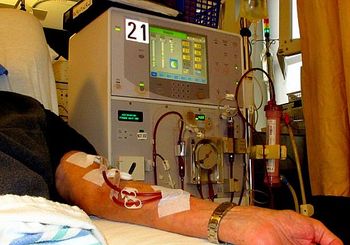
A new study gives strong reasons to back implementing cleaning strategies for hospital privacy curtains.

Saskia v. Popescu, PhD, MPH, MA, CIC, is a hospital epidemiologist and infection preventionist. During her work as an infection preventionist, she performed surveillance for infectious diseases, preparedness, and Ebola-response practices. She holds a doctorate in Biodefense from George Mason University where her research focuses on the role of infection prevention in facilitating global health security efforts. She is certified in Infection Control and has worked in both pediatric and adult acute care facilities.

A new study gives strong reasons to back implementing cleaning strategies for hospital privacy curtains.

Should hospitals worry about severe weather events and their impact on infections?

A lesson from the recent Association of Health Care Journalists conference from one of the expert panelists, Contagion®’s very own, Saskia Popescu, MPH, MA, CIC.

How can we improve infection control in such a tricky environment?

The US Centers for Disease Control and Prevention (CDC) has requested funds for a new high containment lab; let's give it to them.

SHEA and APIC have declared infection control programs as critical components of antimicrobial stewardship programs—are you including them at your institution?

In the dollars and cents of health security, funding towards the Global Health Security Agenda is a smart investment.

Essential oils are popular, but they could be a source of disease spread in health care settings.

The authors of a new study sought to change the constant problem of hand hygiene adherence at their institution: here's how they did it.

Can culturing process changes reduce the impact of catheter-associated urinary tract infections (CAUTIs)?

Was the situation in Flint, Michigan an outlier or an ominous warning of what’s to come?

At one of the worst times, as hospitals are already over capacity with more influenza patients than ever before, the United States is battling an IV bag shortage.

As this season’s flu continues to drive patients to hospitals in droves, an IV bag shortage and tapped out staffing makes infection control particularly difficult.

The publication of a new study poses novel questions for dual-use research of concern and if such work should have been published.

An uncommon disease, tularemia, can pose unique challenges for health security and response efforts.

Preparing for biothreats, regardless of origin, requires that we strengthen the most basic surveillance and response systems within public health and health care.

Saskia Popescu, MPH, MA, CIC, breaks down why an unlikely presence at the BWC highlights the growing importance of civil society involvement in global health safety and security.

In the Centers for Disease Control and Prevention Emerging Infectious Disease journal, investigators have written several articles focused on these 2 components, that, if done poorly, can truly hinder or hasten an outbreak.

The first step in global health security is prevention, but how does it work against a diverse range of threats?

One intensive care unit utilized advanced infection control efforts to tackle an outbreak and won.

A surprising source of this opportunistic pathogen was found through environmental testing.

Does following the NSQIP reduce post-operative UTIs?

Here are a few things your friendly infection control team would appreciate for the holidays.

What microbial growth was found after Contagion® writer, Saskia Popescu swabbed & sent her samples?

A recent outbreak of Legionnaires’ disease at Disneyland in Anaheim, California, shows that even the “happiest place on earth” isn’t immune to this virulent pathogen.

Hospital employees are increasingly using hospital infection rates to highlight gaps in training, education, and staffing.

Can we track Clostridium difficile infections to see how patient movements result in exposures?

A viral hemorrhagic fever is currently plaguing Uganda. We break down the current situation.

C. difficile prevention is usually thought of in terms of environmental disinfection and health care worker hand hygiene; what about the patient's role?

New research is drawing attention to the underlying risk of spreading infectious diseases when participating in organized athletic activities.